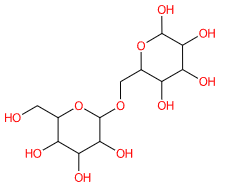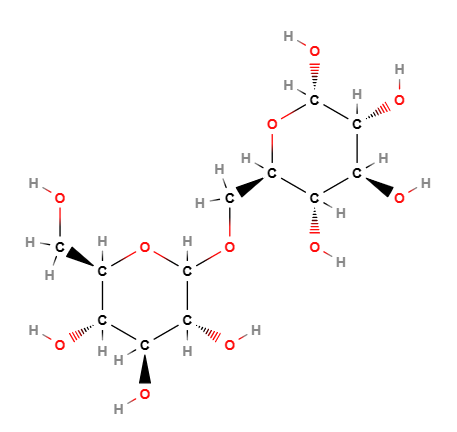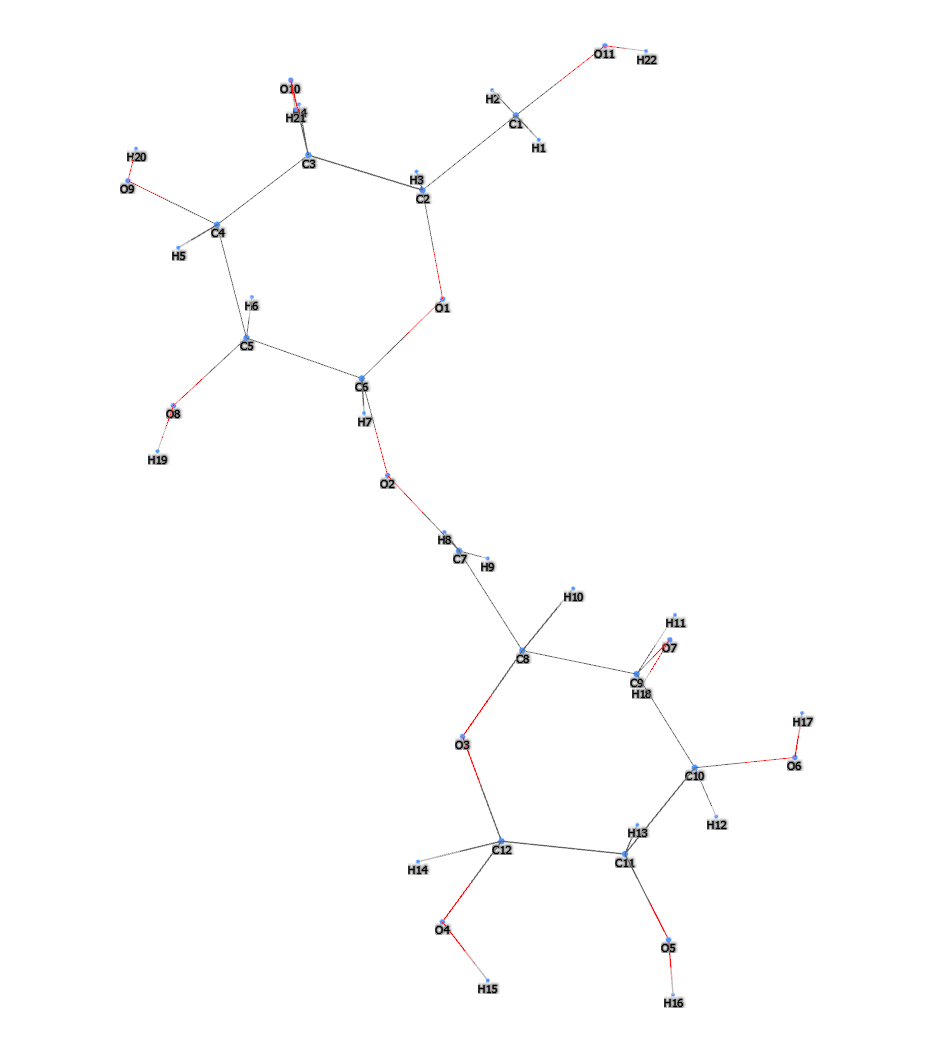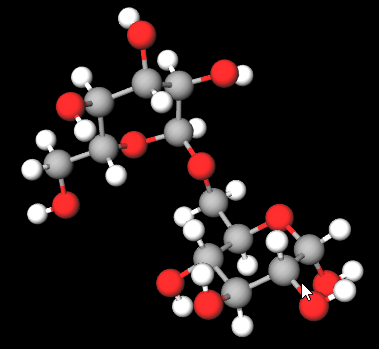| "Descrizione" by Street82 (2970 pt) | 2023-Apr-28 10:03 |
Review Consensus: 9 Rating: 9 Number of users: 1
| Evaluation | N. Experts | Evaluation | N. Experts |
|---|---|---|---|
| 1 | 6 | ||
| 2 | 7 | ||
| 3 | 8 | ||
| 4 | 9 | ||
| 5 | 10 |
E1200 (Polidestrosio) è un carboidrato, oligosaccaride, polimero del glucosio, con alto peso molecolare, contenente piccole quantità di sorbitolo e acido citrico. Industrialmente è prodotto tramite fusione e condensazione degli ingredienti (90 parti di D-glucosio, 10 parti di sorbitolo, 1 parte di acido citrico o 0,1 parti di acido fosforico).
Si presenta in forma di polvere bianca, solubile in acqua.

A cosa serve e dove si usa
Alimentazione
Ingrediente inserito nella lista degli additivi alimentari europei come E1200 con funzione stabilizzante, stabilizzante e parzialmente conservante.
Fornisce effetti fisiologici simili a quelli di altre fibre dietetiche e ha mostrato potenziale prebiotico e di stimolare selettivamente la crescita e/o l'attività di uno o di un numero limitato di batteri intestinali associati a diversi vantaggi fisiologici sulla salute (1).
Sicurezza
Il Gruppo di esperti scientifici dell'EFSA sugli additivi alimentari e gli aromatizzanti ritiene che non vi è alcuna necessità di una dose giornaliera numerica ammissibile (DGA) per il polidestrosio (E 1200) e che non vi sono preoccupazioni per la sicurezza degli usi e dei livelli d'uso segnalati del polidestrosio come additivo alimentare (2).
Cosmetica
Agente di carica. Regola il contenuto di acqua, diluisce altri solidi, può aumentare il volume di un prodotto per un miglior flusso, agisce come tampone contro gli acidi organici, aiuta a mantenere il pH della miscela entro un livello determinato.
Umettante. Composto igroscopico utilizzato per ridurre al minimo la perdita d'acqua nella pelle e per prevenirne l'essiccazione facilitando un più rapido e maggiore assorbimento di acqua nello strato corneo dell'epidermide. L'epidermide è il più superficiale dei tre strati con cui è composta la pelle umana (epidermide, derma e ipoderma) ed è lo strato che provvede al mantenimento dell'idratazione in tutti e tre gli strati. A sua volta l'epidermide è composta da cinque strati: corneo, il più superficiale, granulare, spinoso, lucido, basale. Gli umettanti hanno la capacità di trattenere nello strato corneo l'acqua che attirano dall'aria ed hanno la funzione di idratare la pelle. Meglio utilizzarli prima degli emollienti che sono a base d'olio.
 |  |
 |  |
- Formula molecolare C12H22O11
- Peso molecolare 342.297 g/mol
- CAS 68424-04-4 200-075-1
- UNII VH2XOU12IE
- EC number 614-467-9
Sinonimi :
- E1200
- O762
- AS-15284
- MolPort-023-220-455
Bibliografia______________________________________________________________________
(1) do Carmo MM, Walker JC, Novello D, Caselato VM, Sgarbieri VC, Ouwehand AC, Andreollo NA, Hiane PA, Dos Santos EF. Polydextrose: Physiological Function, and Effects on Health. Nutrients. 2016 Sep 8;8(9):553. doi: 10.3390/nu8090553.
Abstract. Polydextrose (PDX) is a non-digestible oligosaccharide used widely across most sectors of the food industry. It is a randomly linked glucose oligomer containing small amounts of sorbitol and citric acid. The random bonds in PDX prevent mammalian digestive enzymes from readily hydrolyzing the molecule and it has a reported energy value of 1 kcal/g. These properties have led to the acceptance in many countries that PDX provides similar physiological effects as other dietary fibers and has shown prebiotic potential. Dietary intervention with prebiotics has been shown to selectively stimulate the growth and/or activity of one or a limited number of intestinal bacteria associated with several physiological benefits on health. Therefore, the objective of this review was a survey of the literature on the effect of supplementation with PDX in health, and to list the benefits for maintaining health and/or reducing the development of diseases.
(2) EFSA Panel on Food Additives and Flavourings (FAF), Younes, M., Aquilina, G., Castle, L., Engel, K.H., Fowler, P., Fürst, P., Gürtler, R., Gundert‐Remy, U., Husøy, T. and Manco, M., 2021. Re‐evaluation of polydextrose (E 1200) as a food additive. EFSA Journal, 19(1), p.e06363.
Abstract. This opinion deals with the re-evaluation of polydextrose (E 1200) when used as a food additive. The Panel followed the conceptual framework for the risk assessment of certain additives and considered that: adequate exposure estimates were available; the margin of safety (MOS)/margin of exposure (MOE) for arsenic was between 0.5-14 and 8.5 for lead; the exhaustions of the tolerable weekly intake (TWI) for cadmium would be 165%, 10% for mercury, whereas the exhaustion of the tolerable daily intake (TDI) for nickel would be 9%; the absorption is limited and part of polydextrose is fermented in the large intestine into short-chain fatty acids (SCFA); adequate toxicity data were available; there is no concern with respect to genotoxicity; no adverse effects were reported in subchronic studies in rats, dogs or monkeys nor in chronic or carcinogenicity studies in mice and rats at the highest doses tested of up 12,500 mg/kg body weight (bw) per day and 15,000 mg/kg bw per day, respectively; the nephrocalcinosis in dogs given high doses of polydextrose was considered to be a treatment-related but a secondary effect related to diarrhoea, and hence not relevant for the risk assessment; no adverse effects were reported in reproductive or developmental toxicity studies in rats administered up to 10,000 mg polydextrose/kg bw per day, or in a developmental toxicity study in rabbits up to 1,818 mg/kg bw per day (the highest dose tested). Therefore, the Panel concluded that there is no need for numerical acceptable daily intake (ADI) for polydextrose (E 1200), and that there is no safety concern for the reported uses and use levels of polydextrose as a food additive. The Panel recommended that European Commission considers to lower the maximum limit for lead and to introduce limits for arsenic, cadmium and mercury in the EU specifications for polydextrose (E 1200), and to verify that polydextrose-N as a food additive (E 1200) is no longer marketed in the EU. © 2021 European Food Safety Authority. EFSA Journal published by John Wiley and Sons Ltd on behalf of European Food Safety Authority.
| Evaluate |

